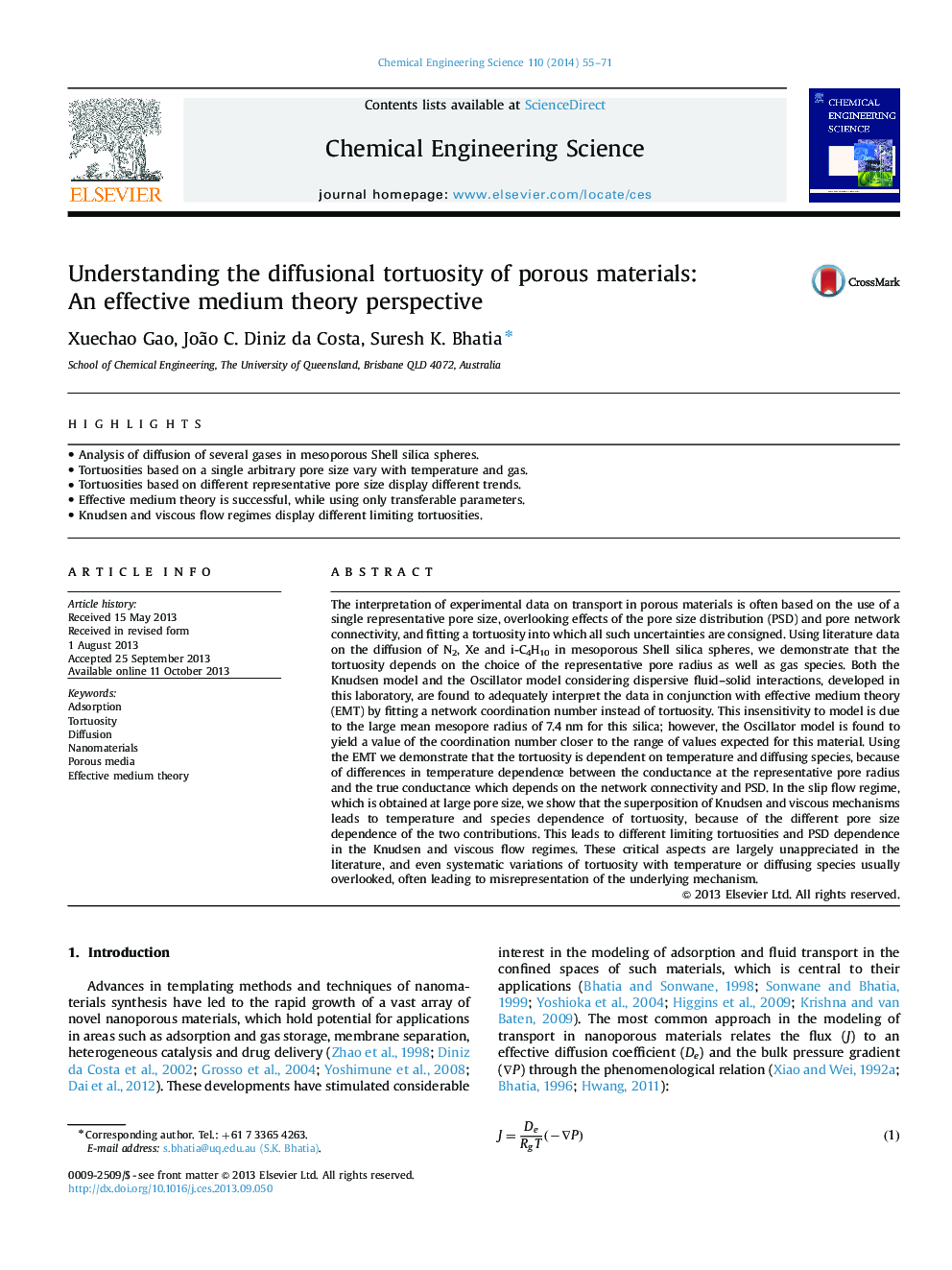| کد مقاله | کد نشریه | سال انتشار | مقاله انگلیسی | نسخه تمام متن |
|---|---|---|---|---|
| 155031 | 456880 | 2014 | 17 صفحه PDF | دانلود رایگان |
• Analysis of diffusion of several gases in mesoporous Shell silica spheres.
• Tortuosities based on a single arbitrary pore size vary with temperature and gas.
• Tortuosities based on different representative pore size display different trends.
• Effective medium theory is successful, while using only transferable parameters.
• Knudsen and viscous flow regimes display different limiting tortuosities.
The interpretation of experimental data on transport in porous materials is often based on the use of a single representative pore size, overlooking effects of the pore size distribution (PSD) and pore network connectivity, and fitting a tortuosity into which all such uncertainties are consigned. Using literature data on the diffusion of N2, Xe and i-C4H10 in mesoporous Shell silica spheres, we demonstrate that the tortuosity depends on the choice of the representative pore radius as well as gas species. Both the Knudsen model and the Oscillator model considering dispersive fluid–solid interactions, developed in this laboratory, are found to adequately interpret the data in conjunction with effective medium theory (EMT) by fitting a network coordination number instead of tortuosity. This insensitivity to model is due to the large mean mesopore radius of 7.4 nm for this silica; however, the Oscillator model is found to yield a value of the coordination number closer to the range of values expected for this material. Using the EMT we demonstrate that the tortuosity is dependent on temperature and diffusing species, because of differences in temperature dependence between the conductance at the representative pore radius and the true conductance which depends on the network connectivity and PSD. In the slip flow regime, which is obtained at large pore size, we show that the superposition of Knudsen and viscous mechanisms leads to temperature and species dependence of tortuosity, because of the different pore size dependence of the two contributions. This leads to different limiting tortuosities and PSD dependence in the Knudsen and viscous flow regimes. These critical aspects are largely unappreciated in the literature, and even systematic variations of tortuosity with temperature or diffusing species usually overlooked, often leading to misrepresentation of the underlying mechanism.
Journal: Chemical Engineering Science - Volume 110, 3 May 2014, Pages 55–71
